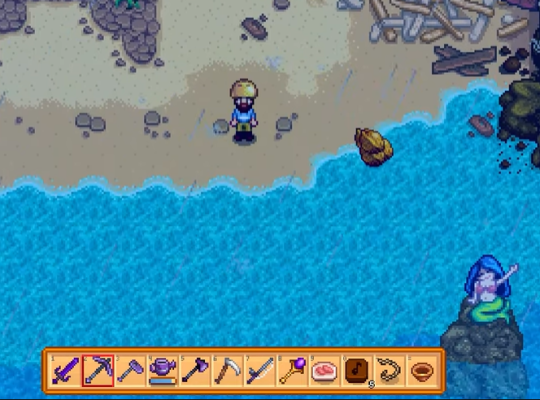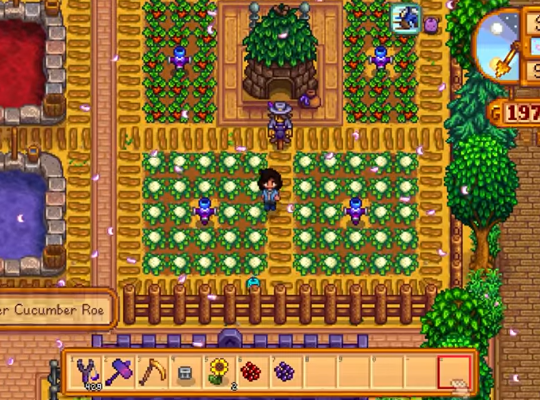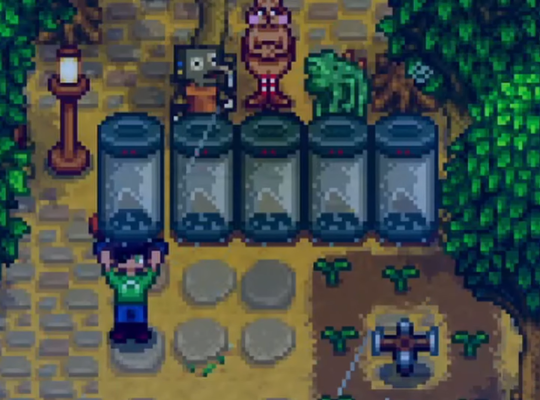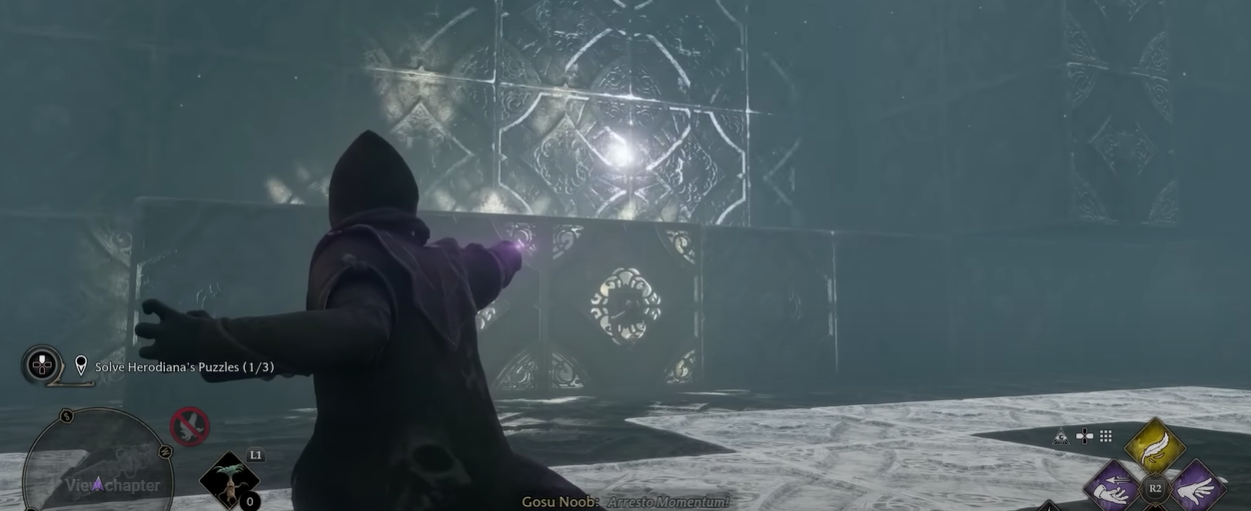In the enchanting world of Stardew Valley, artifacts play a vital role in uncovering the secrets of the past and enriching your gameplay experience. These precious relics hold historical significance and provide various benefits to players.
In this guide, we’ll delve into the acquisition, utilization, and rewards associated with artifacts, shedding light on their importance within the game.
Importance of Artifacts in the Game
Artifacts in Stardew Valley hold a special place within the game’s narrative and gameplay mechanics. These objects are remnants of a forgotten past, relics that offer glimpses into the history and culture of the valley.
Each artifact carries its own story and significance, inviting players to explore and uncover the secrets of the world they inhabit.
In Stardew Valley, artifacts can take various forms, representing different aspects of the valley’s past. Pottery fragments, for example, offer insights into ancient craftsmanship and artistic traditions.
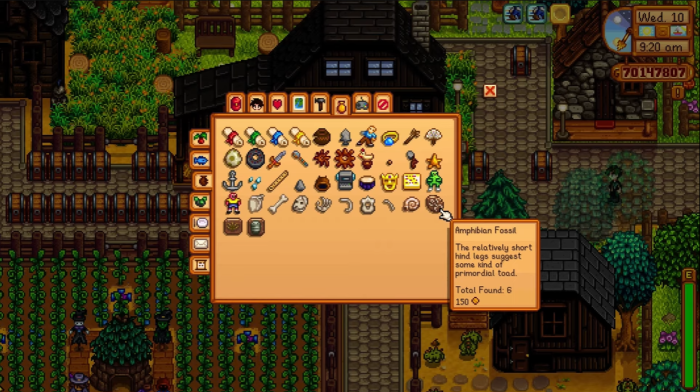
These delicate shards of clay vessels speak volumes about the artistic sensibilities and techniques employed by the inhabitants of the valley’s bygone era.
Prehistoric tools provide a window into the valley’s early civilizations and technological advancements. These tools, made from stone or bone, hint at the daily lives and survival strategies of the people who once inhabited the land.
From primitive axes to arrowheads, these artifacts shed light on the valley’s early industries, hunting practices, and resource utilization.
Fossils, on the other hand, offer glimpses into the rich biodiversity that once thrived in the valley. Petrified remains of ancient creatures, plants, and even minerals indicate a vibrant ecosystem that has faded away.
By unearthing these fossils, players can piece together the valley’s natural history and deepen their understanding of the diverse life forms that once roamed the area.
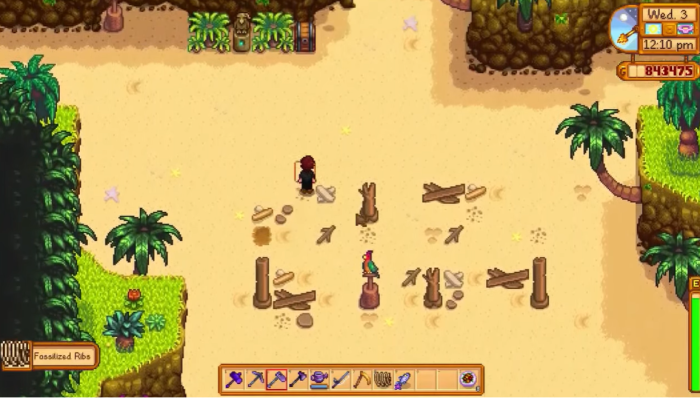
Lost scrolls add a touch of mystery and intrigue to the world of Stardew Valley. These ancient manuscripts, often written in cryptic or forgotten languages, contain knowledge and wisdom lost to time.
Discovering and deciphering these scrolls can unlock valuable information, such as recipes, farming techniques, or hints about hidden locations.
It’s important to note that artifacts in Stardew Valley are not mere decorative items or collectibles. They are meant to be cherished and studied. Each artifact represents a unique piece of the valley’s heritage, and their collection forms an essential part of Stardew’s gameplay experience.
Players are encouraged to seek out these artifacts for their monetary value and the knowledge and rewards they offer.
Acquisition of Artifacts
Players can explore various acquisition methods to amass a diverse collection of artifacts. Here are the most common ways to obtain these precious items:
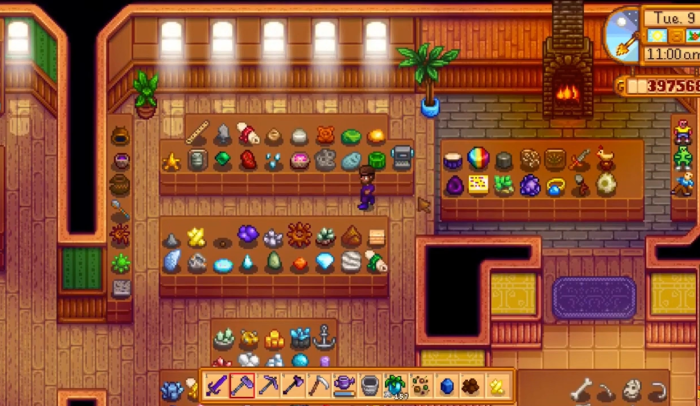
Using the Hoe on an Artifact Spot
Scattered across Stardew Valley are artifact spots, indicated by wiggling worms on the ground. By using the Hoe on these spots, players have a chance to unearth artifacts.
These artifact spots can be found in various locations, such as the farm, the town, the beach, and the forest. It’s essential to watch for these spots as they are randomly generated and can appear on any given day, frequently appearing in the Winter season.
Players may obtain many artifacts upon using the Hoe on an artifact spot, including pottery fragments, prehistoric tools, ancient weapons, and rare jewelry. Each artifact has unique characteristics and historical significance, adding depth to the game’s lore and exploration.
Using the Hoe on Dirt in The Mines and the Skull Cavern
While adventuring deep within The Mines or the treacherous Skull Cavern, players can use the Hoe on dirt patches to uncover hidden artifacts.
These areas often house rare artifacts that can be found nowhere else, rewarding intrepid explorers with valuable additions to their collections. It’s worth noting that the artifacts found in these locations are typically more practical and more challenging to obtain than those found in artifact spots.
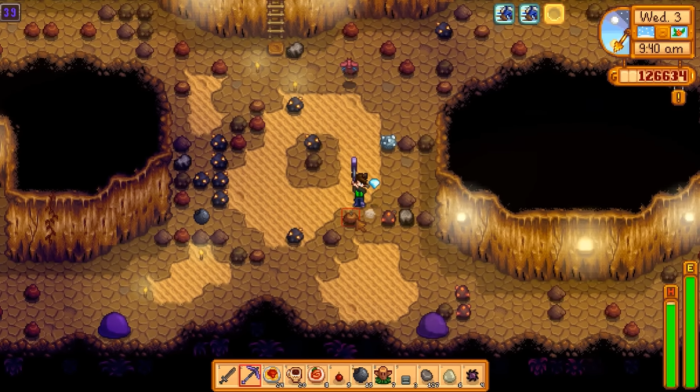
As players descend further into the mines or delve deeper into the Skull Cavern, the chances of discovering artifacts increase. However, the deeper levels also pose more significant challenges in the form of powerful enemies and hazardous environmental conditions.
Killing Monsters
In addition to their role as adversaries, monsters in Stardew Valley can also be a source of artifacts. Certain monsters have a chance to drop artifacts upon defeat. These artifacts are often associated with the monster’s lore or historical context.
Engaging in combat with monsters provides a thrilling challenge and the possibility of obtaining unique artifacts. Players must strategize their battles, considering monster difficulty, location, and time of day to maximize their chances of acquiring artifacts.
Solving Secret Notes
Stardew Valley features a series of secret notes scattered throughout the game world. These notes offer cryptic clues and riddles that, once deciphered, lead players to hidden artifact locations.
Discovering and solving these secret notes adds an element of mystery and exploration to the gameplay. Secret notes can be found in various ways, such as foraging, mining, and fishing. The messages often hint at specific locations or conditions required to find artifacts.
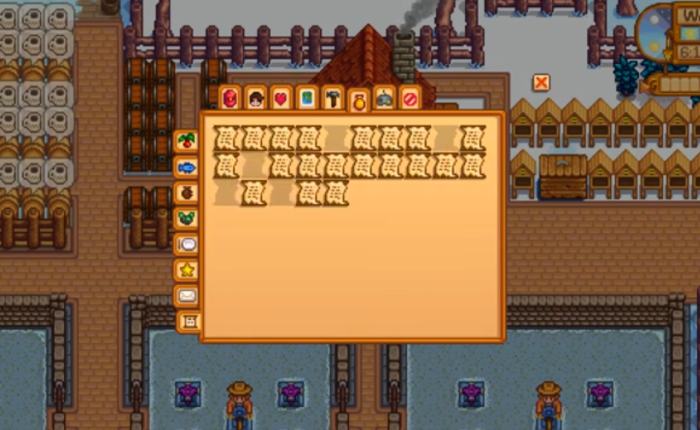
Players must pay close attention to their surroundings and carefully analyze the clues provided to unravel the secrets and unlock hidden artifacts.
Breaking Open Artifact Troves
Artifact Troves are rare chests that occasionally appear in the game world. These troves are usually found in outdoor areas like farms, beaches, or wilderness.
Players must pay for Clint’s services to break them open (25g each) and access their contents, similar to how geodes work, which may include valuable artifacts.
Encountering an Artifact Trove presents an exciting opportunity for players to acquire artifacts that may not be obtainable through other means. The troves often contain rare and valuable artifacts, making them highly sought after by collectors.
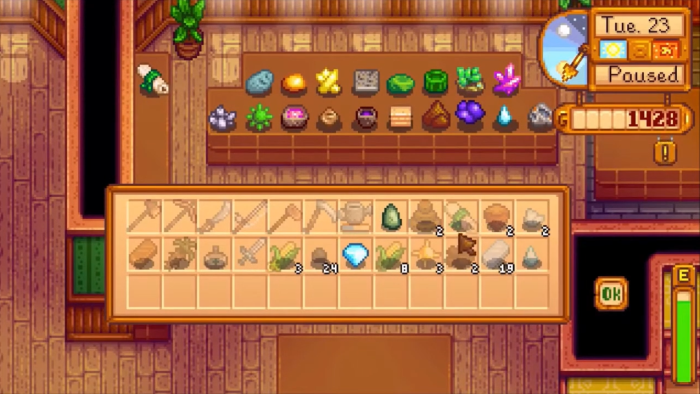
Breaking open these troves adds an element of surprise and anticipation to the gameplay as players eagerly await the reveal of their contents.
Fishing for Treasure Chests
The peaceful and leisurely fishing activity in Stardew Valley can also yield artifacts. While casting their fishing line into rivers, lakes, or the ocean, players can reel in treasure chests alongside their catch.
When a treasure chest is hooked, players must complete the fishing mini-game to retrieve it. Opening the chest reveals its contents, which can include artifacts.
Fishing for treasure chests adds a layer of excitement to the fishing experience and provides a rewarding way to obtain artifacts while enjoying the serenity of Stardew Valley’s waters.
Breaking Bone Nodes
Bone Nodes are rock formations in specific locations, such as the Ginger Island Dig Site. These nodes contain ancient remains and fossils, which can be broken open using a pickaxe. Breaking a Bone Node reveals bone fragments that players can collect and donate to the museum or sell for profit.
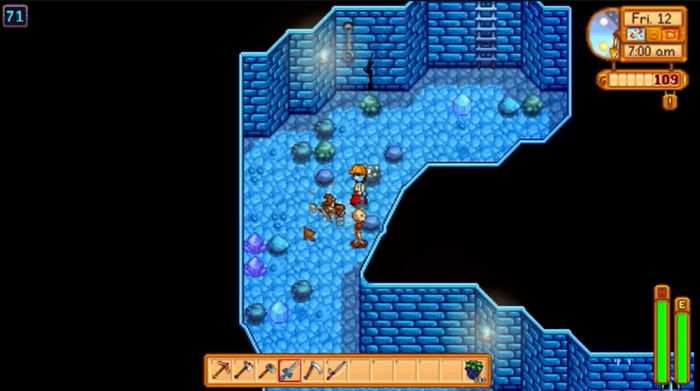
Occasionally, rare artifacts may emerge from these ancient remains. These artifacts can include fossils, skeletal remains, or other items of archaeological interest. Breaking Bone Nodes offers a unique opportunity to acquire artifacts while delving into the history and ancient past of Stardew Valley’s world.
Use of Artifacts
Artifacts serve a multitude of purposes beyond mere collection. Understanding how to employ them effectively can significantly enhance your Stardew Valley experience. Here are some critical uses for artifacts:
Donations to the Museum
One of the primary uses of artifacts is their donation to the local museum in Pelican Town. Upon donating artifacts to the museum, players contribute to the town’s cultural preservation and unlock new areas for exploration.
The museum accepts donations of different categories, such as the Mineral Collection, the Artifact Collection, and the Fossil Collection. Each artifact donated fills a slot in the museum display, providing valuable information about the history and culture of Stardew Valley.
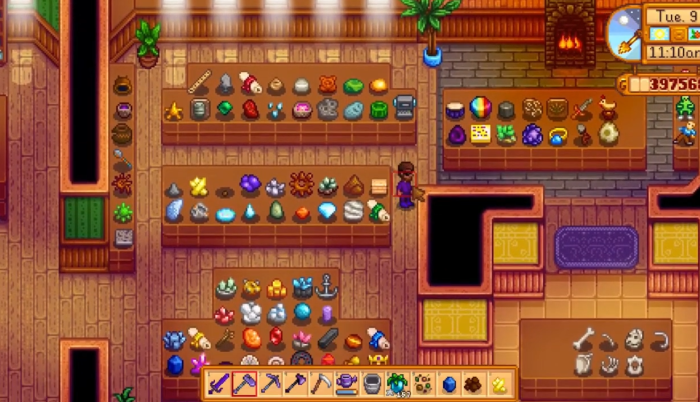
As players donate more artifacts, they unlock new rewards, equipment, or recipes. The museum becomes a central hub for learning about the game’s lore and uncovering the valley’s secrets.
Gifting to Penny and the Dwarf as Liked Gifts
Certain artifacts are significant for specific villagers. Gifting these artifacts to Penny, the kind-hearted villager who loves gems and rare objects, or the reclusive Dwarf, fond of minerals and geodes, can strengthen your relationship with them.
Both Penny and the Dwarf have artifacts as Liked gifts. But each villager in Stardew Valley has unique preferences and tastes, so paying attention to their likes and dislikes is essential.
Players can deepen their friendships, increase their friendship points, and unlock additional dialogue options by giving artifacts as gifts to villagers. Building solid relationships with villagers opens up opportunities for new quests, rewards, and even romantic relationships.
Tailoring at a Sewing Machine
Several artifacts can be transformed into unique clothing items through the tailoring feature in Stardew Valley. Players can create one-of-a-kind garments that reflect their journey and individuality by utilizing a Sewing Machine and combining specific artifacts with other materials.
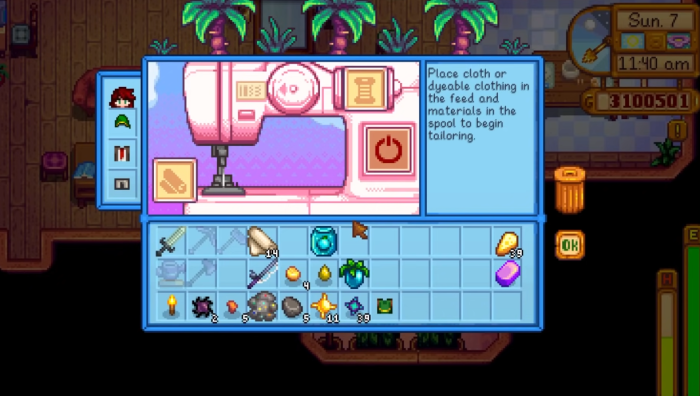
For example, combining a Prehistoric Scapula artifact with cloth can yield a stylish Skeleton Shirt. These artifact-based clothing items provide aesthetic customization options for the player character and serve as a testament to their adventures and the artifacts they have collected.
Specific Uses of Some Artifacts
While most artifacts serve general purposes, some have specific uses or benefits beyond the services mentioned above. These unique artifacts often have particular interactions or triggers, adding further depth to their gameplay significance.
For example, the Dinosaur Egg, a rare artifact that can be obtained from the Mines or Artifact Spots, can be hatched into a dinosaur. This pet can roam around the player’s farm, providing companionship and adding a touch of prehistoric charm to the surroundings.
They also lay a Dinosaur Egg every seven days after maturity, which can be used to hatch another dinosaur or create the profitable Dinosaur Mayonnaise.
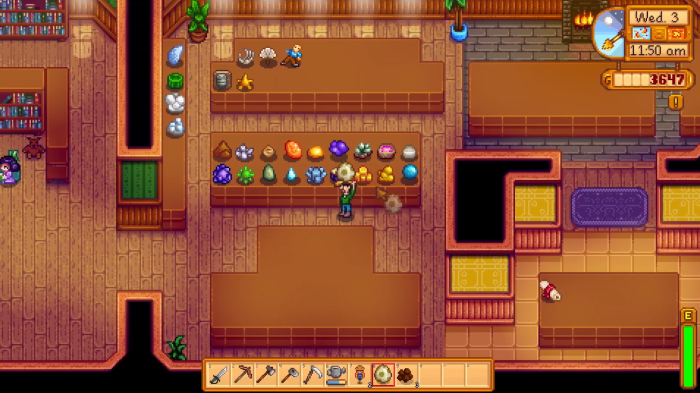
By understanding the various benefits of artifacts in Stardew Valley, players can maximize their potential and fully immerse themselves in the rich world of artifact collection, friendship-building, and customization.
Donation Rewards
By diligently donating artifacts to the museum, players can unlock various rewards. Each artifact presented contributes to the museum’s completion and grants unique benefits.
Here are some examples:
Artifact Donated | Reward |
Ancient Seed | Recipe for Ancient Seeds |
All Dwarf Scrolls | Dwarvish Translation Guide |
Bone Flute | Flute Block |
List of Artifacts
Artifact | Description | Price | Locations (Highest to lowest chance) |
Amphibian Fossil | The preserved remains of an ancient amphibian. | 150g | Fishing Chest, Bone Nodes, Forest, Mountain |
Anchor | A heavy metal anchor from an old shipwreck. | 100g | Beach, Artifact Trove, Fishing Chest |
Ancient Doll | A fragile doll that seems to have been well-loved. | 60g | Artifact Trove, Mountain, Forest, Bus Stop, Fishing Chest, Town, Feat of the Winter Star |
Ancient Drum | An ancient musical instrument. | 100g | Artifact Trove, Frozen Geode, Omni Geode, Bus Stop, Forest, Town |
Ancient Seed | An ancient seed of unknown origin. | 5g | Artifact Trove, Fishing Chest, Forest, Mountain, Monster Drop |
Ancient Sword | A well-preserved sword from a bygone era. | 100g | Artifact Trove, Fishing Chest, Forest, Mountain |
Arrowhead | A sharp arrowhead used by ancient archers. | 40g | Artifact Trove, Bus Stop, Mountain, Forest |
Bone Flute | A tone-deaf pastel bone flute. | 100g | Artifact Trove, Fishing Chest, Mountain, Forest, Town |
Chewing Stick | A gnawed-on stick. | 50g | Artifact Trove, Duggy Drop, Mountain, Forest, Fishing Chest, Town |
Chicken Statue | A statue depicting a chicken. | 50g | Farm, Artifact Trove, Fishing Chest |
Chipped Amphora | A damaged pottery jar from an ancient civilization. | 40g | Artifact Trove, Town |
Dinosaur Egg | A giant dino egg. | 350g | Skull Cavern Prehistoric Floors, Pepper Rex Drop, Fishing Chest, Mountain |
Dried Starfish | A preserved starfish from the ocean. | 40g | Beach, Artifact Trove, Fishing Chest |
Dwarf Gadget | A curious gadget used by the local Dwarf. | 200g | Magma Geode, Artifact Trove, Omni Geode, Tilling at Mines Floors 40 to 79 |
Dwarf Scroll I | Mysterious scrolls written in the Dwarf language. | 1g | Tilling at Mines or Skull Cavern, Monster Drop |
Dwarf Scroll II | Mysterious scrolls written in the Dwarf language. | 1g | Blue Slime Drop, Frost Bat Drop, Dust Sprite Drop, Ghost Drop, Tilling at Mines Floors 1 to 39 |
Dwarf Scroll III | Mysterious scrolls written in the Dwarf language. | 1g | Blue Slime Drop, Monster Drop |
Dwarf Scroll IV | Mysterious scrolls written in the Dwarf language. | 1g | Tilling at Mines Floors 80 and above, Monster Drop (excluding Serpent, Wilderness Golem, Skeleton, Iridium Bat, Haunted Skull, Iridium Crab, Carbon Ghost) |
Dwarvish Helm | A helmet crafted by the Dwarves. | 100g | Artifact Trove, Forest, Fishing Chest |
Glass Shards | Shards of glass from some kind of prism. | 20g | Beach, Artifact Trove, Fishing Chest |
Golden Mask | An intricately crafted mask made of gold. | 500g | Artifact Trove, Desert |
Golden Relic | A valuable relic made of gold. | 250g | Desert, Artifact Trove |
Nautilus Fossil | A fossilized shell of an ancient marine creature. | 80g | Fishing Chest, Beach, Bone Nodes |
Ornamental Fan | A decorative fan from a long-lost civilization. | 300g | Artifact Trove, Beach, Fishing Chest, Forest, Town |
Palm Fossil | A fossil from an ancient palm tree. | 100g | Forest, Bone Nodes, Desert, Beach |
Prehistoric Rib | Fossilized remains of prehistoric creatures. | 100g | Pepper Rex Drop, Town, Bone Nodes, Farm |
Prehistoric Scapula | An ancient shoulder blade. | 100g | Forest, Bone Nodes, Town, Skeleton Drop |
Prehistoric Skull | Fossilized remains of prehistoric creatures. | 100g | Mountain, Haunted Skull Drop, Bone Nodes |
Prehistoric Tibia | Fossilized remains of ancient creatures. | 100g | Pepper Rex Drop, Railroad, Bone Nodes, Forest |
Prehistoric Tool | Fossilized remains of prehistoric artifacts. | 50g | Artifact Trove, Bus Stop, Forest, Mountain, Fishing Chest |
Prehistoric Vertebra | Fossilized remains of ancient creatures. | 100g | Pepper Rex Drop, Bus Stop, Bone Nodes |
Rare Disc | A disc with unknown purpose and origin. | 300g | Artifact Trove, Fishing Chest, Monster Drop (Shadow Brute, Spider, Shadow Shaman), Bat Drop (excluding Iridium Bat) |
Rusty Cog | A well-preserved cog, thick with rust. | 25g | Mountain, Artifact Trove, Fishing Chest, Tilling at Mines Floors |
Rusty Spoon | Old, rusty mechanical parts. | 25g | Town, Artifact Trove, Fishing Chest, Tilling at Mines Floors |
Rusty Spur | Old, rusty mechanical parts. | 25g | Farm, Artifact Trove, Fishing Chest, Tilling at Mines Floors |
Skeletal Hand | The fossilized hand of an ancient creature. | 100g | Backwoods, Haunted Skull Drop, Bone Nodes, Beach |
Skeletal Tail | The fossilized tail of an ancient animal. | 100g | Fishing Chest, Bone Nodes, Tilling at Mines Floors |
Strange Doll (Green) | Creepy dolls of unknown significance. | 1,000g | Secret Note 17, Farm, Town, Bus Stop, Beach, Forest, Mountain, Fishing Chest, Tilling at Mines Floors |
Strange Doll (Yellow) | Creepy dolls of unknown origin. | 1,000g | Secret Note 18, Farm, Town, Bus Stop, Beach, Forest, Mountain, Fishing Chest, Tilling at Mines Floors |
Trilobite | A fossilized marine arthropod. | 50g | Beach, Forest, Mountain, Bone Nodes |
Conclusion
Artifacts in Stardew Valley are more than mere collectibles; they contribute to the game’s immersive world. From unearthing forgotten relics to unraveling their stories, artifacts enrich the gameplay experience in numerous ways.
By donating them to the museum, utilizing them wisely, and unlocking unique rewards [1], players can fully embrace the rich history and charm of Stardew Valley.


